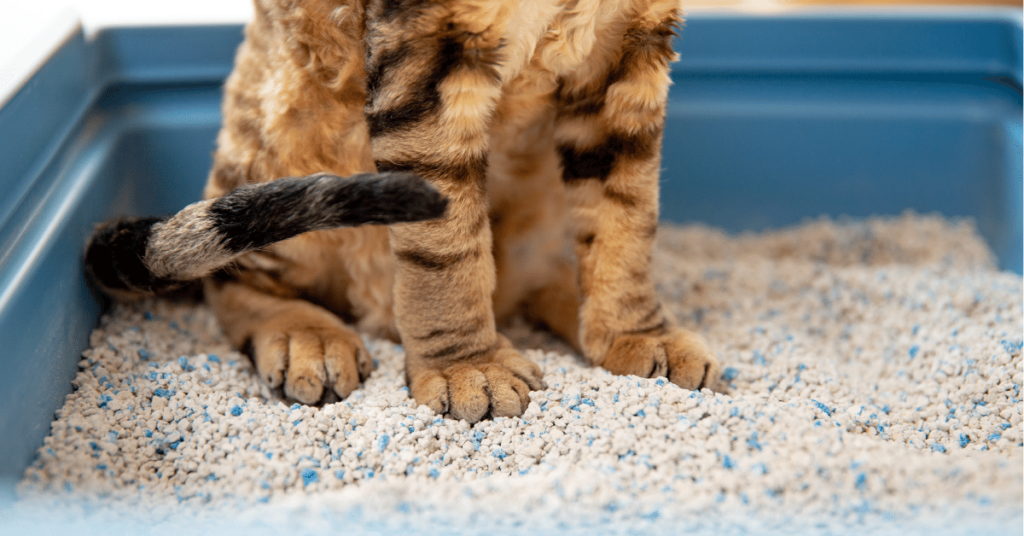Introduction
Teaching your cat to use a litter box is an essential part of being a cat owner. A litter box provides your furry friend with a designated space to relieve themselves, keeping your home clean and hygienic. However, not all cats instinctively know how to use a litter box, especially kittens or newly adopted cats. In this article, we will provide you with expert tips for successful litter box training that will ensure your cat’s utmost comfort and convenience.
Choosing the Right Litter Box
Before beginning the training process, it’s vital to ensure you have the right litter box for your cat. Consider these key factors when selecting the box:
Size and Accessibility
Choose a litter box that is large enough for your cat to comfortably move around in. If you have a kitten, ensure the box has low sides for easy entry and exit. As your cat grows, you can switch to a larger box.
Type of Litter Box
There are various types of litter boxes available, including open trays, covered boxes, and automatic self-cleaning boxes. Experiment with different types to find the one that your cat prefers. Some cats may feel more secure in a covered box, while others may prefer the simplicity of an open tray.
Multiple Boxes
If you have multiple cats, it’s essential to provide each cat with their own litter box. Cats are territorial animals, and having multiple boxes will help prevent conflicts and ensure that each cat has their own designated spot.
Setting Up the Litter Box
Now that you’ve selected the ideal litter box for your furry friend, it’s time to set it up for success. Follow these steps to create a comfortable environment for your cat:
Location Matters
Find a quiet and easily accessible location for the litter box. Cats appreciate privacy when using the bathroom, so avoid placing it in high-traffic areas or near noisy appliances. Additionally, make sure the litter box is on the same floor your cat frequents.
Provide Easy Access
Ensure that the litter box is easily reachable for your cat. Avoid placing it in areas with obstacles or high steps that might discourage them from using it. You want the box to be inviting and accessible at all times.
Scoop Regularly
Cats are generally clean animals and prefer a tidy litter box. Make it a habit to scoop the box at least once a day to remove any waste. A clean litter box encourages your cat to use it consistently and prevents unpleasant odors from permeating your home.
The Training Process
Litter box training is a gradual process that requires patience and consistency. Here are the steps to follow for successful training:
Step 1: Introduce your cat to the litter box
Place your cat in the litter box shortly after meals or naps. Gently scratch their front paws in the litter to simulate digging. This action helps them familiarize themselves with the texture and purpose of the litter.
Step 2: Encourage your cat to enter the box willingly
Place your cat near the litter box and entice them with a toy or treat. Allow them to explore the box at their own pace. Reinforce positive behavior with praise and rewards.
Step 3: Demonstrate scratching and digging
Using your hand or a toy, gently scratch the surface of the litter to demonstrate the digging motion. This action will encourage your cat to mimic the behavior and associate the litter with bathroom activities.
Step 4: Reinforce litter box usage
Observe your cat closely and reward them with praise or treats every time you see them using the litter box. Positive reinforcement is crucial in creating a positive association between the litter box and appropriate elimination.
Troubleshooting Common Issues
Despite your best efforts, accidents may still occur during the training process. Here’s how to address some common issues:
Accidents outside the litter box
If your cat consistently eliminates outside the litter box, assess the situation. First, check if the litter box is clean and easily accessible. Stress or medical issues could also be contributing factors. Consult a veterinarian if the problem persists.
Avoiding litter box altogether
If your cat avoids the litter box entirely, try changing the type of litter or the location of the box. Cats have individual preferences, and finding the right combination may encourage them to use the litter box consistently.
Summary
Teaching your cat to use a litter box requires patience, consistency, and the right approach. By following these expert tips, you can successfully train your cat to use the litter box, ensuring a clean and comfortable environment for both of you. Remember to choose the right litter box, set it up properly, and be patient throughout the training process. With time, your cat will embrace the litter box as their designated spot for elimination.







